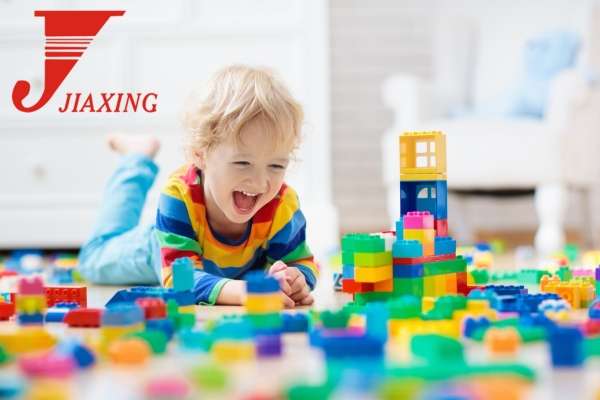Why Open-Ended Toys Are the Best Investment for Kids
In a world overflowing with electronic gadgets, character-themed toys, and fast-changing trends, parents are often overwhelmed by the choices available in the toy aisles. Yet, amid the noise of flashy packaging and animated ads, one category of toys quietly holds unparalleled value for a child’s development: open-ended toys. These are toys without predetermined outcomes or specific uses, giving children the freedom to create, explore, and imagine without limits.
Open-ended toys are more than just playthings—they are developmental tools that nurture creativity, cognitive growth, emotional intelligence, and social skills. Understanding why open-ended toys are the best investment for kids starts with redefining what “investment” truly means when it comes to play.
Understanding Open-Ended Toys
Open-ended toys are those that do not have a fixed function or singular purpose. Unlike toys designed to do one thing—such as pressing a button for a sound or following a script based on a character—open-ended toys can be used in countless ways. Classic examples include wooden blocks, clay, dolls, play silks, and LEGO bricks. These toys do not dictate how they should be used; rather, they invite children to decide for themselves.
A single set of wooden blocks might become a castle, a zoo, a bridge, or a spaceship, depending on the day and the child’s imagination. This inherent versatility is at the heart of their power. Open-ended toys adapt to the child, not the other way around.
Encouraging Creativity and Imagination
One of the greatest benefits of open-ended toys is the way they spark creativity. When there is no "right way" to play, children must invent their own rules, create narratives, and build worlds from scratch. This kind of imaginative play is foundational for problem-solving, storytelling, and lateral thinking.
Unlike structured toys that follow instructions, open-ended toys provide an invitation to invent. Whether it's building a city from blocks or using a scarf as a superhero cape, children learn that their ideas matter. The toy becomes a tool for expression, not just entertainment.
This kind of play encourages divergent thinking—the ability to come up with multiple solutions to a single problem—which is a critical skill in nearly every profession and facet of life.
Supporting Cognitive Development
Cognitive development in children involves building memory, attention, reasoning, and language skills. Open-ended toys promote this kind of growth in subtle but powerful ways.
When a child stacks blocks, they are engaging with basic principles of physics and spatial awareness. When they create a pretend grocery store with play food and baskets, they are developing categorization skills and early math concepts like sorting, counting, and budgeting.
Moreover, by exploring the multiple uses of a single toy, children exercise their executive function—skills related to planning, focus, and flexible thinking. Instead of being led through a series of steps, they must make decisions, try out solutions, and evaluate the outcomes. This process helps develop a deep understanding of cause and effect and encourages persistence through trial and error.
Nurturing Emotional Intelligence
Emotional growth is just as vital as intellectual development, and open-ended toys provide a safe space for children to explore and express emotions. When kids engage in pretend play, they often take on roles—parent, teacher, doctor, firefighter. These roles allow them to process what they observe in real life and experiment with empathy, leadership, and care.
A dollhouse, for instance, might become the stage for working through a difficult situation, such as a move or a new sibling. A child may use toy animals to act out feelings of fear, excitement, or sadness. Through these narratives, children learn to understand and regulate their emotions, developing a vocabulary for self-expression and communication.
This emotional literacy lays the foundation for strong interpersonal relationships and better mental health as children grow older.
Promoting Social Skills Through Cooperative Play
Another compelling reason open-ended toys are such a wise investment is their ability to facilitate cooperative play. Because they are not tied to rigid rules or a fixed storyline, these toys naturally lend themselves to group interaction.
Two or more children playing with building blocks might negotiate the layout of a structure, assign roles in a pretend game, or brainstorm a shared story. These interactions foster essential social skills, including collaboration, conflict resolution, negotiation, and leadership.
Unlike competitive games that can result in winners and losers, open-ended play emphasizes the journey over the outcome. Everyone contributes, everyone’s ideas matter, and the result is a collective creation that strengthens peer relationships.
Adaptability Across Ages and Stages
Open-ended toys grow with your child, making them one of the most cost-effective purchases parents can make. A toy kitchen, for example, might start as a simple place to mimic mom and dad's cooking but can evolve into a bakery, restaurant, or cooking show stage as your child’s imagination matures.
Because the child dictates the complexity of the play, these toys remain relevant for years, spanning toddlerhood through elementary school. In contrast, many toys designed for specific ages or themes quickly become obsolete once the child outgrows the intended use.
This adaptability makes open-ended toys both sustainable and economical, reducing the need for frequent replacements while supporting ongoing developmental needs.
Reducing Screen Time and Encouraging Active Play
In today’s digital age, children are exposed to screens at an increasingly early age. While some digital content is educational, prolonged screen time has been linked to decreased attention span, disrupted sleep, and limited physical activity.
Open-ended toys serve as a powerful antidote. They invite children to engage in active, hands-on play that involves their bodies and minds. Whether it’s crawling through a fort made of pillows or designing a racetrack out of cardboard, kids move, explore, and create in ways that screens simply cannot replicate.
This kind of engagement is essential not only for physical health but also for holistic brain development.
Cultivating Independence and Confidence
Another major benefit of open-ended toys is their role in developing independence. With no set instructions or outcomes, children learn to trust their instincts, make choices, and solve problems on their own. They become the architects of their playtime rather than passive consumers.
This autonomy builds confidence. Each successful structure built, scenario imagined, or problem solved gives children a sense of accomplishment. They begin to see themselves as capable creators, thinkers, and leaders—an identity that empowers them both in and out of the playroom.
Encouraging Mindfulness and Focus
While many modern toys are loud, colorful, and fast-paced, open-ended toys tend to be quieter and more grounded. They encourage a kind of mindfulness that is rare in today’s overstimulated environments.
Children playing with simple toys like clay, sand, or wooden blocks often enter a state of deep focus known as “flow,” where time seems to disappear, and they are fully immersed in the activity. This focus not only enhances creativity but also improves attention span and patience—skills that benefit academic performance and emotional regulation alike.
Building a Sustainable and Minimalist Play Environment
Parents who embrace open-ended toys often find that they can reduce the overall volume of toys in the home. Rather than needing dozens of specialized items, a small collection of versatile toys can fulfill a wide range of play needs. This minimalist approach to play not only declutters the home but also encourages deeper, more meaningful engagement with each toy.
Additionally, many open-ended toys are made from natural, non-toxic materials like wood, fabric, and silicone, making them safer for children and more sustainable for the planet. Choosing quality over quantity aligns with both environmental and developmental priorities.
Making the Shift to Open-Ended Play
For parents new to the concept, transitioning to open-ended play can start small. Begin by observing which toys your child gravitates toward and how they use them. Look for toys that encourage imagination, problem-solving, and collaboration.
You don’t have to eliminate all structured toys, but introducing more open-ended options can significantly enrich your child’s play experience. Create a play space that is calm, organized, and stocked with a few high-quality items that inspire curiosity and exploration.
Over time, you’ll likely notice changes in the way your child plays—more independence, deeper focus, greater creativity. These shifts signal a powerful investment in your child’s future.
Conclusion
Open-ended toys are not just a trend—they are a timeless and evidence-backed approach to child development. They grow with your child, invite endless possibilities, and support the full spectrum of learning: intellectual, emotional, social, and physical.
In a consumer-driven world where many toys offer short-lived excitement, open-ended toys provide long-term value. They nurture the very traits we hope to cultivate in our children: creativity, resilience, empathy, and confidence.
By investing in open-ended toys, parents give their children something far more valuable than entertainment. They offer the tools to think freely, feel deeply, and engage fully with the world around them. That, more than anything, is an investment worth making.
Frequently Asked Questions
1. What are open-ended toys?
Open-ended toys are toys that do not have a fixed purpose or outcome. They can be used in multiple ways depending on a child’s imagination. Examples include building blocks, clay, dolls, and play silks.
2. Why are open-ended toys better than electronic or battery-operated toys?
Open-ended toys encourage creativity, problem-solving, and imaginative play, whereas electronic toys often guide play in a fixed direction, limiting a child’s ability to explore and create on their own.
3. At what age should I introduce open-ended toys to my child?
Open-ended toys can be introduced as early as infancy. Simple items like stacking cups, fabric scarves, and soft blocks are excellent starters. As children grow, they can engage with more complex materials like LEGO, art supplies, or pretend-play props.
4. Are open-ended toys more expensive?
Not necessarily. While some open-ended toys made from natural materials may have a higher upfront cost, they tend to last longer, adapt to various age groups, and reduce the need for constantly buying new toys—making them a smart long-term investment.
5. How do open-ended toys help with brain development?
These toys support brain development by stimulating areas responsible for creativity, decision-making, spatial reasoning, and problem-solving. They also encourage critical thinking and flexible thinking skills through unstructured play.
6. Can open-ended toys support emotional growth?
Yes, absolutely. Through imaginative play and role-playing, children process emotions, explore different social roles, and learn to express feelings in a safe and constructive way.
7. Do open-ended toys work well for group play or just solo play?
They are ideal for both. Children can play alone and explore their ideas independently, or they can collaborate with others to build shared stories and structures, helping develop important social skills.
8. How can I tell if a toy is open-ended?
Ask yourself: Can this toy be used in more than one way? Does it allow my child to direct the play experience? If the answer is yes, it’s likely an open-ended toy.
9. How do open-ended toys help reduce screen time?
These toys offer an engaging, hands-on alternative to digital devices. They encourage physical and imaginative activity that keeps children entertained without relying on passive screen-based entertainment.
10. What are some must-have open-ended toys for every home?
Some popular and versatile options include wooden building blocks, LEGO sets, art supplies, play kitchens, dolls, magnetic tiles, and open-ended nature-based materials like stones, sticks, and shells.



.png)

